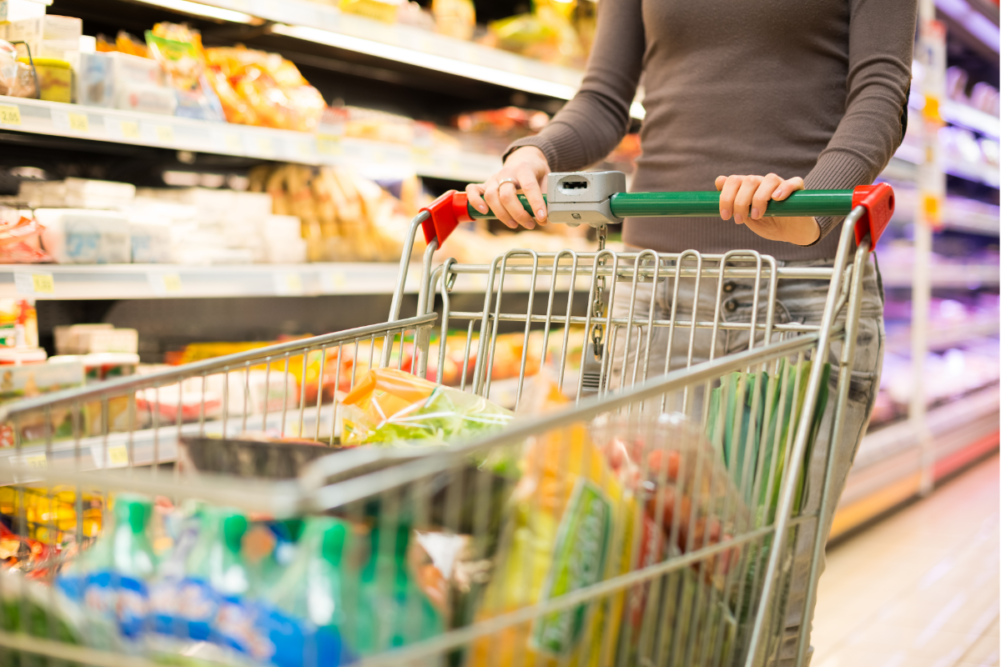 KANSAS CITY — Several food and beverage companies see the elevated levels of consumer demand at retail that have buoyed consumer packaged goods sales volumes in 2020 and 2021 carrying into next year. But recent macroeconomic data indicate retail demand may be slowing as increased mobility, supply chain challenges, inflation and subsequent higher prices impact consumer purchasing patterns.
KANSAS CITY — Several food and beverage companies see the elevated levels of consumer demand at retail that have buoyed consumer packaged goods sales volumes in 2020 and 2021 carrying into next year. But recent macroeconomic data indicate retail demand may be slowing as increased mobility, supply chain challenges, inflation and subsequent higher prices impact consumer purchasing patterns.
Among companies hopeful about the outlook, The Hershey Co. is adding capacity to meet demand for some of its brands, particularly Reese’s, which saw retail sales rise 10% during the third quarter of fiscal 2021. The strong performance followed a pandemic-fueled 25% sales surge during the same period of the previous year. The added capacity will be operational in 2022 and 2023, according to the company.
Likewise, Conagra Brands, Inc. executives are viewing 2022 with optimism. Sean Connolly, Conagra’s president and chief executive officer, said in early October that while the company expects inflation in 2022 to be higher than expected, the company sees strong consumer demand along with pricing actions and productivity offsetting inflation.
These expressions of optimism reflect a confidence that has developed as CPG manufacturers have navigated unprecedented market conditions during the past 18 months. Unfortunately, it does not appear the difficult conditions will lessen in 2022, and there are warning signs.
On Oct. 28, the Bureau of Economic Analysis reported real Gross Domestic Product (GDP) increased at an annual rate of 2% in the third quarter of 2021, well below the heady real GDP rise of 6.7% in the second quarter and down from analysts’ third-quarter expectation of 2.6%. Reasons cited for the economic slowdown included the impact of the COVID-19 Delta variant during the quarter, the ending of some federal stimulus benefits and supply chain issues that affected some companies’ ability to keep up with demand.
Notably, growth of personal consumption expenditures — the component that accounts for about two-thirds of GDP — fell markedly during the quarter to 1.6%. It was 11.4% in the first quarter of 2021 and 12% in the second quarter. In the third quarter of 2018 personal consumption was 2.7%, and during the third quarter of 2019 it was 3.2%.
By itself the modest quarterly GDP growth may be an anomaly influenced by unusual factors like the COVID-19 Delta variant, but it coincides with other indicators that may portend a coming deceleration in demand.
The Conference Board’s Consumer Confidence Index, for example, fell in July, August and September, but rebounded in October. The Board said the uptick may show reduced concerns about the the Delta variant but added short-term inflation fears hit a 13-year high.
Many CPG manufacturers raised prices earlier this year and have plans to raise them again this fall or in early 2022. How consumers respond may help set the tone for the trajectory of demand.
A tight labor market and rising wages will offset some of the pressure, but uncertainty about the supply chain, the path of COVID-19 recovery and the state of inflation in 2022 all cloud the outlook for consumer demand in the coming year. Businesses have successfully navigated some of the most difficult market conditions in recent memory. It is clear they will need to demonstrate such skills in the year ahead.





